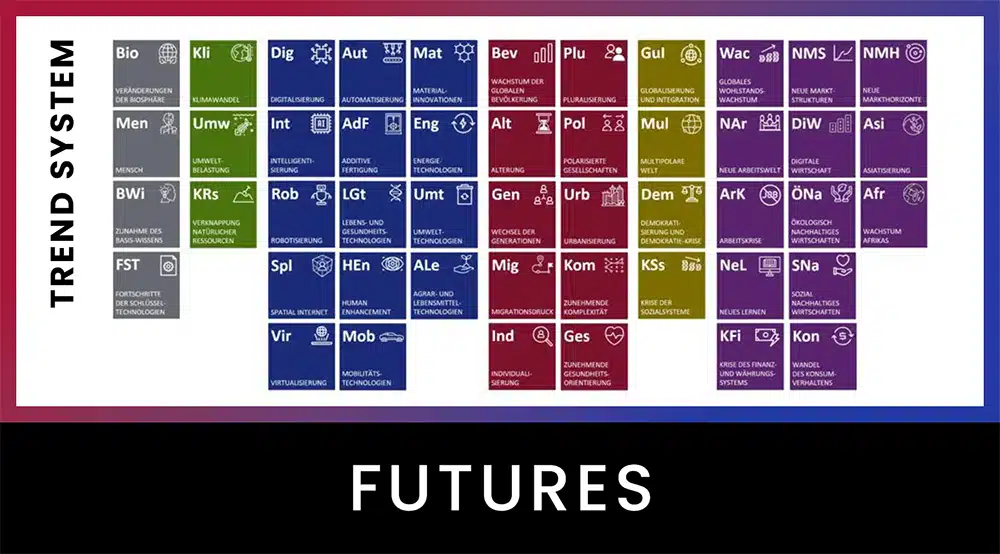Dr. Pero Mićić
Being mobile to visit beautiful or useful places, meet people, get things done is one of the most important needs. And one of the largest markets. When autonomous vehicles arrive, they will change our world at least as much as the smartphone.
Hardly anyone in 2007 imagined how smartphones would change just about every aspect of our lives and work. And hardly anyone today imagines how disruptive autonomous vehicles will be.
Certainly also for your business, your company and your profession.
But wait a minute. Is this a foregone conclusion? Will autonomous vehicles really come? Or will this end up being just one of those crazy illusions of tech fans?
I’ll give you all the arguments here about whether autonomous vehicles are coming by 2030. Arguments for and against the idea that in the future we will be driven by artificial intelligence rather than driving ourselves. Then you can have an informed say!

Attempts have been made to build self-driving cars since 1925[1], almost 100 years ago. And now the time has come.
The vision is already fascinating. In the future, cars and trucks will all drive themselves, without any human drivers at all. Even without a steering wheel. Man is a passenger. Like on the train or bus. Everything super safe, convenient and cheap too. The experts call this level 5.
The vehicles can be built much more purposeful
There are vehicles for one or two people, small buses for groups or as rolling offices. There will even be hotel rooms on wheels. And the trucks and vans are also autonomous.
Will autonomous vehicles really displace humans as drivers? This question is the subject of this article. In our trend system, the trends intelligentization and mobility technologies play a role here. But when looked at closely, autonomous vehicles, if they come, will reinforce many other trends, but also end or even reverse some.
Argument balance
Are they coming or not? And if so, when?
Let’s do an argument balance sheet with plus arguments in favor of AF coming in the next ten years and minus arguments against it all happening in the foreseeable future.
The logic behind this is that autonomous vehicles will prevail if it is technically possible, the advantages are great, the prices are reasonable, the hassles are small if it is legally permitted, and the disadvantages are not too great.
By the way, if you disagree with me, I’m happy to learn. Comment. But please only factually and with logical arguments.
Plus: Autonomous vehicles are coming
It is technically feasible
The first fleets of vehicles are already driving autonomously. In Phoenix Arizona and in several cities in China… you can marvel at it, for example.
Take a look at AI Driver’s channel. It shows what Tesla’s cars can already do today. And that’s only a good level 2 to 3 system. It’s fascinating.
Mind you, the actual fully autonomous driving is only limited to less than 2000 test vehicles of Tesla in the USA. All other Teslas are at a very good level 2.
There are two main approaches.
Some, like Waymo, Google’s sister company, or Zoox, Amazon’s subsidiary, are betting that autonomous vehicles can learn a specific area, such as a city, very precisely and then move around in it with confidence. Tesla, on the other hand, develop their vehicles to find their way even in places where no Tesla has ever been before.
There are two technical strategies for the vehicles
VW, for example, has test vehicles driving with no less than 11 lidars, i.e. laser scanners, and 7 radar devices and 14 cameras. Tesla, on the other hand, only wants to work with cameras. They have always completely dispensed with lidar. And now they have even removed the radar device. The core argument: If humans can control a car with two cameras, i.e. our eyes, in a reasonably safe manner, a car with 8 cameras can do so even more so.
And there are two different ideas of what the infrastructure should look like.
Some are betting that the vehicles need a special infrastructure to be able to drive autonomously. An environment they can communicate with to drive safely. For example, they can communicate with traffic lights that the car can’t even see yet. And again Tesla makes the outlier and says that the infrastructure is sufficient for humans to drive and that it will then be enough for the super computers with their super sensors all the time.
Anyway, the technical feasibility has come a long way. From our point of view, it is only a matter of time. In other words, not whether autonomous vehicles are technically feasible, but only when their use will become widespread.
Autonomous vehicles are much safer in 2030
Waymo cites their mission as building the “world’s most experienced driver.” Tesla says its system for fully autonomous driving will be at least ten times better and safer to drive than a human. Can you and may you believe that? Yes, today’s data already shows that’s getting there. Worldwide, 1.3 million people die on the roads each year. 3,700 every day. Many millions are injured, some seriously. Human error” is responsible for 90 percent of accidents. The robot cabs will drive ten times safer than any human. At least. They will make fewer mistakes, cause fewer accidents, and fewer people will be injured and die in traffic.
We often hear that a Tesla has once again driven under a truck or into a wall with Autopilot. The fact is, however, that Tesla’s somewhat cockily named Autopilot already makes driving significantly safer than without it. And we’re talking about the next ten years here.
The autonomous vehicles have not only two cameras, just as we humans have two eyes, but eight or more cameras, react unimaginably quickly, and constantly coordinate with other vehicles.
Artificial intelligence doesn’t have a scare tactic. It reacts many times faster than a human. It makes many mistakes because it learns from us. When AI makes mistakes, it will quickly learn from them and never make the mistake again.
Everything an autonomous vehicle learns, it can immediately pass on to all other vehicles of its type. But we humans have to learn everything one at a time.
Humans will soon no longer have a chance to be the better driver.
The ethics committee in Germany is therefore right to say that automated and connected driving is ethically imperative if the systems cause fewer accidents than human drivers.
Autonomous vehicles are significantly cheaper per kilometer
How many hours a day do you drive in your car? So on average? For most people, it’s an hour to an hour and a half a day. No very expensive machine would be accepted to be used for only one or one and a half hours a day. The hour would be far too expensive. That’s exactly why driving is so expensive. Because you spread the acquisition costs over an average of only 30 to 40 km per day and 13,000 km per year.
If they drove 130,000 km a year instead of 13,000, their cost per kilometer would be drastically lower. Not ten times lower, because there would be more wear, but many times lower.
Because robotaxis only need to stop for charging and maintenance, they can be on the road for 16 hours or more. At only 30 km per hour and 360 days, that’s 230,000 km per year. In this way, the acquisition costs are spread over many times more kilometers and the kilometer becomes unimaginably cheap.
And no, the cars are not junk after a year. Autonomous vehicles will be battery electric. Because this is the simplest and most efficient and reliable form of drive imaginable. There are videos about this here on my channel. Even today’s new electric car batteries will last 1 to 2 million km. With then still 60-70% capacity, they go to households and businesses and are later recycled at over 95%.
Autonomous vehicles take them everywhere. Just like human-driven cabs and Ubers today, only much cheaper. Because of the lower depreciation per kilometer, but of course also because no driver has to be paid and because fewer accident claims have to be paid and because insurance premiums are lower. You will be able to be mobile for an estimated 10-20% of the price of a cab. For 20 or 30 cents per kilometer. You can’t drive a car cheaper than that.
AF make less stress
Why are we so unreasonable with cars and pay so much per kilometer? Because our own car is always immediately available, because we don’t have to sit with strangers on the bus or train, because it’s a piece of extended home. Because we don’t want to use complicated car-sharing systems. And it is still a status symbol for many.
But if at any time within a few minutes a robot cab will come to you. If the robot cab is kept nice and clean. If you can choose the type, choose to drive without strangers and pay a little more. Then you do not need to have your own expensive car ready.
Anyone who has ever called an Uber via app can roughly imagine the experience.
Traveling in general loses much of the usual stress. When is the train leaving? Can I still manage it? Will I have a seat? Where is traffic jam right now? Which bridge is currently closed? Autonomous vehicles will make much of that stress simply disappear into thin air.
You then also no longer worry about insurance, taxes, parking, tubers, car wash, service appointments, spare parts.
Anyone can be mobile
Everyone can be mobile with the robotaxis. The eight-year-old can go to volleyball completely without helicopter parents. Four times a week, if she wants. The 94-year-old with visual impairment can visit his long-lost schoolmate without a driver’s license.
This is an unimaginably large increase in the quality of life for millions of people.
As Mario Herger described it in his book: The last novice driver has already been born. Driving licenses are now only made for hobby car driving. Hard to imagine from today’s perspective, yet very likely.
People regain a lot of lifetime
One hour per day in the car is 365 hours per year, which is more than two weeks per year in the car. That’s some people’s whole vacation. While driving in the autonomous vehicle, you can sleep, read, watch movies or meditate. You gain two full weeks of life.
Housing tends to become cheaper
We have learned extremely quickly, especially since 2020, that attendance at work is at least partially overrated. If only because people will commute less, living in the country will be more attractive.
But 100% home office is not the solution. And very many have to be physically present and don’t have the luxury of being able to do their work only on the computer.
For all these people, stressful commute time becomes free time. Even going shopping or to the movies becomes part of the leisure time and part of the experience. Then real estate prices in the city will become relative and life in the countryside will become much more attractive.
Valuable areas become free
The roads will be full, because we will enjoy mobility even more than we do today. But the parking lots will be largely empty because the robo-taxis don’t run one hour a day, but rather 16 hours.
They then stand only for charging or maintenance.
Valuable land we now use for parking can be used elsewhere. These are often the best and most expensive locations.
There are an estimated 300 million parking spaces in the EU. That’s about 2.5 times the size of Saarland.
For the USA with 500 million parking spaces, it has been calculated that if all parking spaces were covered with photovoltaics, the entire electricity demand of the USA could be covered.
To run all cars battery-electrically, about 20% more electricity is needed in Germany. Yes, no more.
It is, of course, only a theoretical example. Photovoltaics can be used better than in parking lots. But it illustrates the value of the land. Either we build on it or we re-vegetate it.
The legal requirements are already in place
The fact that vehicles can drive autonomously does not mean that they are allowed to do so. Legislators must be cautious and conservative by nature. It will be difficult for them to have vehicles driving on the roads that are not controlled by humans, but by artificial intelligence. However, the German government, for example, has surprised us by passing a law in 2021 to enable autonomous vehicles. Although with all caution, but still. And the express aim is to become a leader in the use of autonomous vehicles in Germany. As you can see, politicians sometimes do something right and future-oriented.
Contrary to expectations, the legal problems have already been largely solved today. The owner or the manufacturer will be liable for any damage caused by an autonomous vehicle. There will be drastically less damage and accidents, but still some will happen.
An autonomous vehicle will not be allowed to weigh whether it will knock down two seniors or a child. Ethics committees have made that clear. No weighing of one life against the other.
What is too often forgotten: An autonomous vehicle of the future will act far better than a human in such situations and minimize damage in inevitable accidents.
Who wants, simply keeps his car
In democratically governed countries, it will not be illegal to drive a car yourself for the foreseeable future. It is likely that backup systems will be mandated to improve and safeguard people’s driving performance.
Yes, as hard as it is for you to believe, it is a naïve illusion to believe that humans will permanently drive cars better than artificial intelligences.
Minus: Autonomous vehicles do not come
As with any disruptive technology, there are drawbacks, obstacles, dangers and problems. Let’s take a look at them.
There is much skepticism
45% of German drivers do not believe in the reliability of autonomous vehicles (according to ADAC). Among other things, for fear of hackers.
A comprehensive study by Prognos is extremely pessimistic about the future of autonomous vehicles. The study is from 2018, but the basic assumptions are still cited today. Prognos assumes that real door-to-door functionality cannot be sold at all until 2033 (optimistic) or 2038 (pessimistic). Prognos sees only a 50-70% share of new registrations even for 2050, almost thirty years from now (p. 15). For 2050, it is assumed that the stock of fully automated vehicles will be less than 1% to about 6%.
Quote (p. 47):
“By the 2050 forecast horizon, while about half of vehicles will already have automation capability, in most cases it will only be usable on highways.”
“Because severe crash outcomes are particularly prevalent on rural roads, where automation is unlikely to have much impact by 2050, the effect of automation on traffic fatalities will be marginal by that time.”
Providers like Tesla and Waymo see things quite differently.
We also consider what Prognos writes to be extremely pessimistic and technology-blind. We believe this is a drastic misconception. This shows once again that you have to look carefully at who has written a study. Not only the organization, but also the person. After all, these authors cannot have been particularly informed about the state of the art.
Resistance of the self-propelled
Today and for a long time there are people who simply love to drive. Who want to decide for themselves what your car does. Who enjoy their car. Who still see their car as a status symbol. They will fight back with all their might. Arguments such as more safety, more convenience, more environmental protection will not hold water. No matter how logical and valid they may be. Where emotions rule, logic often doesn’t help at all.
It will be a long time, possibly a whole generation of 25 years, before the last stragglers understand the facts and are convinced that autonomous vehicles are the far superior concept in many dimensions.
Resistance of professional drivers
Unlike self-driving enthusiasts, professional drivers have much more at stake. Many of you will lose your job and even your profession.
As soon as robotaxis work, cab drivers will lose their jobs quite quickly. If robotaxis work, autonomous trucks will too.
In the long term, over several decades, it will be better for humanity to largely abandon self-driving. But we must have understanding for the problems and resistance of professional drivers. Their economic existence is at stake.
I’ll look at the implications of autonomous driving in a later video.
Privacy concerns
Data privacy is often cited as a major issue and reason against autonomous vehicles.
Do you use a smartphone? Anyone who is afraid of the vehicle manufacturer or the state knowing where they have been would not be allowed to use a smartphone today. But that has also been legally clarified. In principle, the driver will be able to decide for himself or herself whether to disclose and use the data. For autonomous vehicles to work, it will not be necessary at all to share personal data with third parties.
It is a mistake to think that AF must always have an Internet connection. It must and will work without it, at least for some of the providers.
Fear of hackers
Vehicles are increasingly computers on wheels. There’s a real risk of these cars being hacked. Possibly even the entire fleet of a manufacturer. The danger is real, no matter how much software developers do about it.
But what is overlooked: Even today’s cars with human drivers can be hacked just like autonomous vehicles. It’s not an argument against autonomous vehicles at all.
It is more likely that an AI can recognize danger faster than a human and also react faster.
Basically, however, the actual damage caused by hackers will most likely be less than the damage to life, limb and soul that autonomous vehicles prevent.
The vehicle population changes only slowly
Almost all of the vehicles on the road today are not capable of autonomous driving. Only Teslas have had the hardware since 2016, with some retrofits, and are now waiting for the software update. On average, the cars are just over nine years old. It will be another twenty or more years before every car sold can really drive fully autonomously, and before every non-autonomous car is replaced.
As a possible surprise, we have to factor in that autonomous vehicles will make the purchase of our own vehicles superfluous very early on. Then the stock and share of autonomous vehicles could grow very quickly.
Conclusion
Of course, we would have to weigh the arguments again now, but the answer to our question is already emerging.
Do you notice anything about the minus arguments? No, or is it? Exactly. They are all ephemeral arguments. While the plus arguments are almost all permanent.
My conclusion: Yes, they will come, the autonomous vehicles. And it will start before 2030.
Whether you like it or not. I’ll go one step further: Even if you are an absolute opponent today. If you have more than ten years to live, you will be happy about autonomous vehicles.
But what’s still hardly on anyone’s radar is that autonomous vehicles will change just about every industry.
Quite obviously, professional women drivers are directly threatened in your economic existence.
But also owners of real estate, parking lots, hotels, supermarkets will be affected.
Then there’s a big die-off among automakers and their suppliers. And of the jobs at these companies.
The consequences of autonomous driving are dramatic. And yet I am convinced that this new technology will also improve people’s quality of life. That all people will find new tasks and jobs again, that the future will ultimately be better than the present.
Follow these links as well:
► The Future Strategy Program for SMEs
► Free video crash course THE FUTURE OF YOUR BUSINESS
► BUSINESS WARGAMING for robust business and future opportunities
► KEYNOTES by Pero Mićić for your employees and customers
Have a bright future!
Placeholder
Sources
[1] Linrrican Wonder – Houdina Radio Control – Wikipedia
- https://www.adac.de/rund-ums-fahrzeug/ausstattung-technik-zubehoer/autonomes-fahren/technik-vernetzung/aktuelle-technik/
- https://www.adac.de/-/media/pdf/motorwelt/prognos_automatisierungsfunktionen.pdf?la=de-de&hash=4FE03D2842A22A8F900AE176AFCA6887
- https://www.adac.de/rund-ums-fahrzeug/ausstattung-technik-zubehoer/autonomes-fahren/
- https://www.adac.de/rund-ums-fahrzeug/ausstattung-technik-zubehoer/autonomes-fahren/recht/ethische-fragen/
- https://www.bundesregierung.de/breg-de/aktuelles/klare-ethik-regeln-fuer-fahrcomputer-389346
- https://www.bmvi.de/SharedDocs/DE/Anlage/Gesetze/Gesetze-19/gesetz-aenderung-strassenverkehrsgesetz-pflichtversicherungsgesetz-autonomes-fahren.pdf?__blob=publicationFile
- https://www.adac.de/rund-ums-fahrzeug/ausstattung-technik-zubehoer/autonomes-fahren/recht/autonomes-fahren-hacker-angriff/
- https://de.wikipedia.org/wiki/Autonomes_Fahren
- https://en.wikipedia.org/wiki/Houdina_Radio_Control#/media/File:Linrrican_Wonder.png
- https://www.mckinsey.com/features/mckinsey-center-for-future-mobility/overview/autonomous-driving
- https://www.mckinsey.com/industries/automotive-and-assembly/our-insights/change-vehicles-how-robo-taxis-and-shuttles-will-reinvent-mobility
- https://www.mckinsey.com/industries/travel-logistics-and-infrastructure/our-insights/a-new-look-at-autonomous-vehicle-infrastructure
- https://www.mckinsey.com/industries/automotive-and-assembly/our-insights/how-china-will-help-fuel-the-revolution-in-autonomous-vehicles
- https://www2.deloitte.com/content/dam/Deloitte/de/Documents/Innovation/Datenland%20Deutschland%20-%20Autonomes%20Fahren_Safe.pdf
- https://www.youtube.com/watch?v=ILzsK65UAtk&ab_channel=AutoX
- https://www.youtube.com/watch?v=fMDgMFW44nk&ab_channel=ApolloAuto
- https://www.youtube.com/watch?v=iiTRJfzmL8Y&ab_channel=TechBang%21
- https://vimeo.com/192179726
- https://www.visualcapitalist.com/ranked-the-autonomous-vehicle-readiness-of-20-countries/
- https://derletztefuehrerscheinneuling.com/2021/02/11/deutschland-ist-nummer-1-beim-autonomen-fahren-oder/
- https://icdn-8.motor1.com/images/mgl/oW6VE/s1/graph-explaining-relationship-between-ride-sharing-and-autonomous-cars.jpg
- https://singularityhub.com/2017/12/18/this-self-driving-ai-is-learning-to-drive-almost-entirely-in-a-virtual-world/
- https://medium.com/@strangecosmos/why-tesla-not-waymo-is-the-leader-in-self-driving-car-development-8eff18c65d3c
- https://cleantechnica.com/2020/08/01/tesla-autopilot-accidents-1-out-of-4530000-miles-us-average-1-out-of-479000-miles/
- https://fortune-com.cdn.ampproject.org/c/s/fortune.com/2021/05/28/germany-automobile-legalize-robotaxi-autonomous-vehicle/amp






























